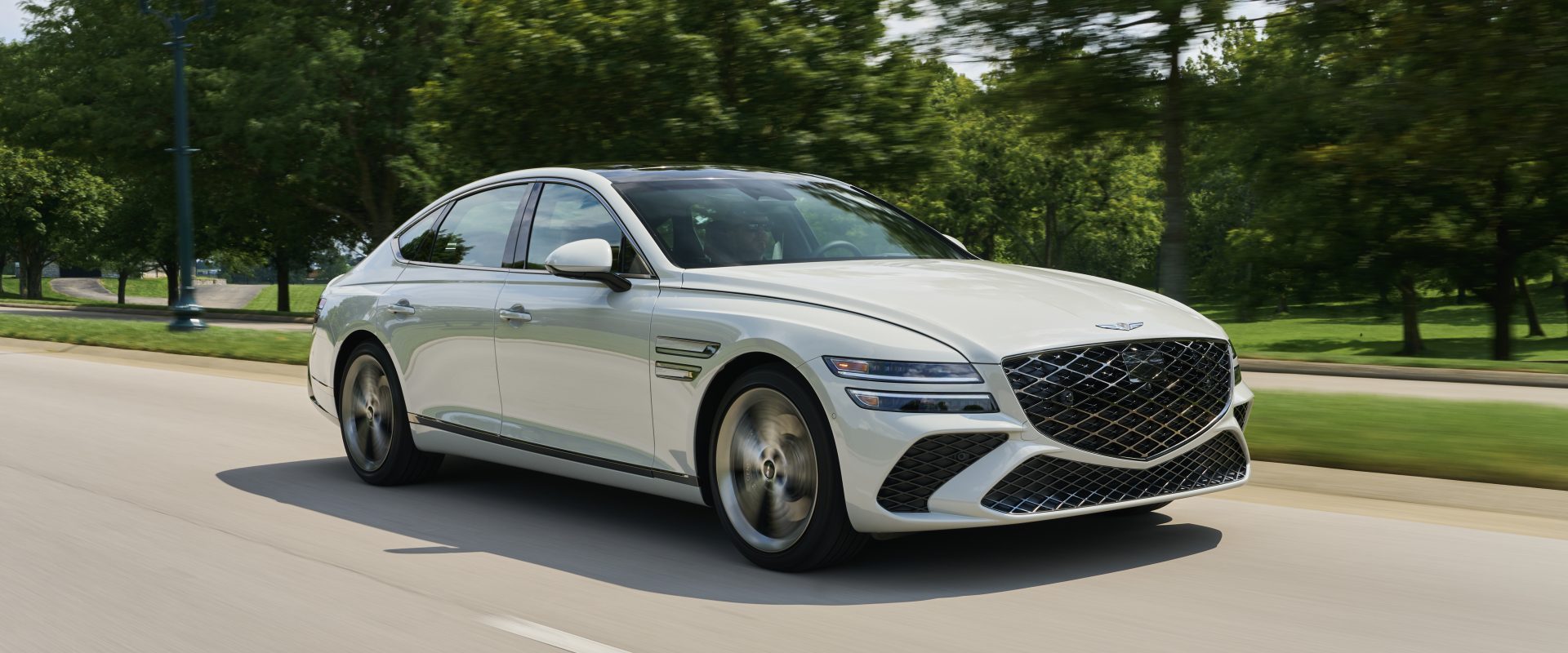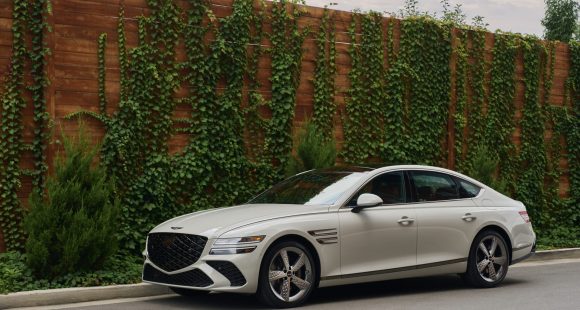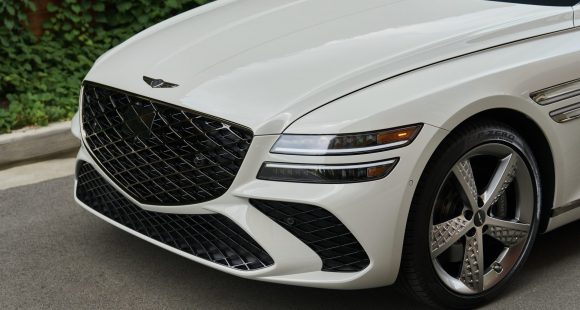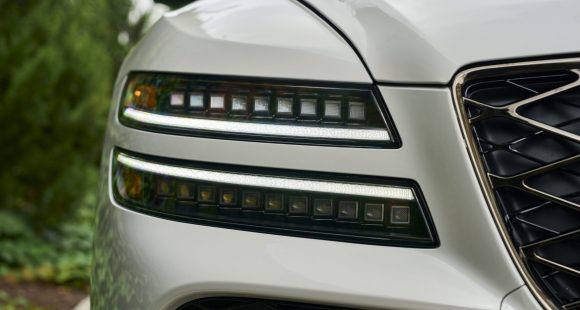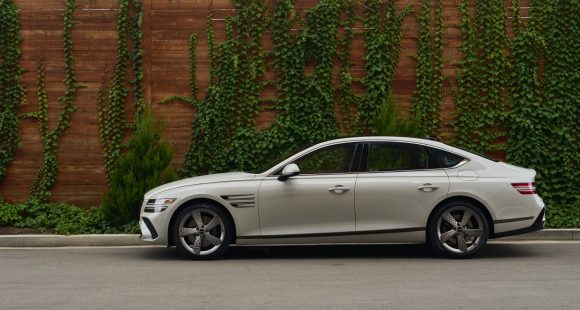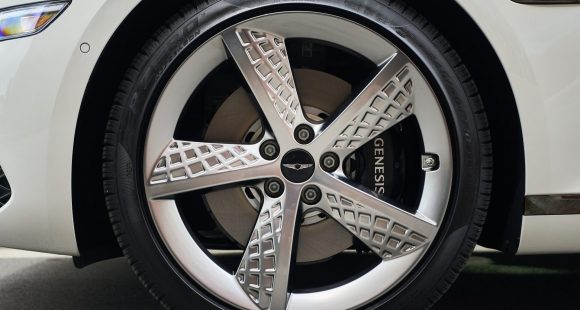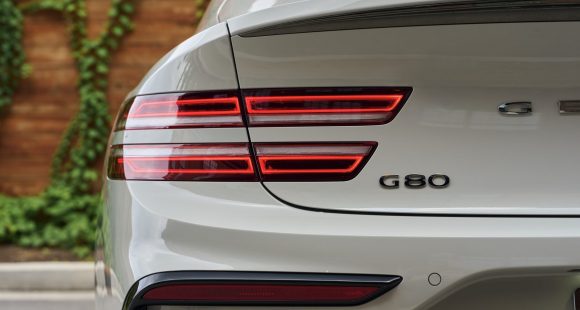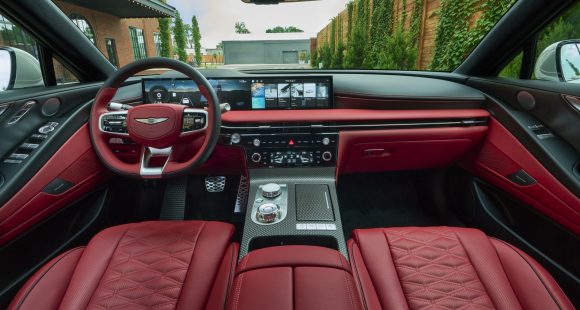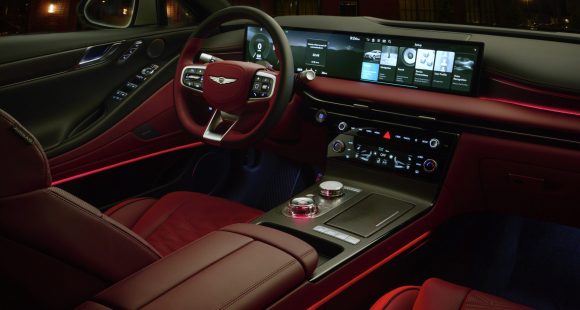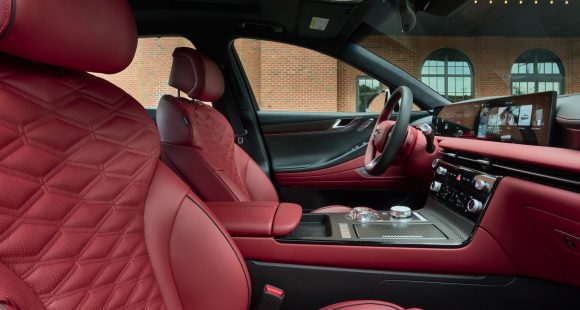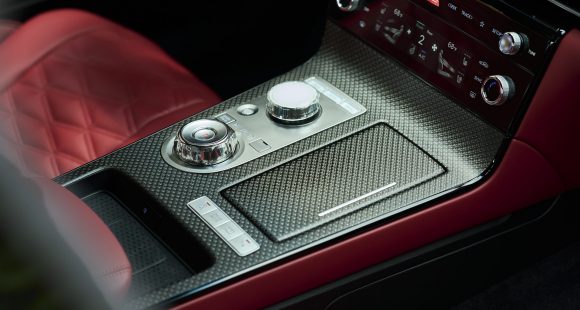2015 Cadillac ATS Coupe
Without a doubt, the most exciting American sport sedan in decades is the Cadillac ATS. Since it arrived for 2013, the ATS has fully stood its ground against the best four-doors that Germany has to offer. Now Cadillac is following that up with a coupe version. So, let’s see if, even with two less doors, it’s just as able.
As the first compact sporty coupe to ever wear the Cadillac crest, the 2015 ATS Coupe has got a tall bar to top, to make headway into a small, clearly European dominated segment.
Now, being drawn from the wonderful ATS sedan certainly helps. Indeed, GM hasn’t done anything major here beyond crafting a 2-door body onto the ATS chassis. So if you liked the sedan, chances are you’ll really like the Coupe.
Unlike many sedan/coupe siblings, wheelbase stays the same, though the 2-door’s track has been widened for better handling, and a more muscular appearance, especially at the rear.
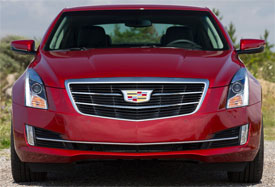 Only the hood is shared, the rest of the body panels are unique. Though sleek and stylish, it comes off a little conservative compared to ATS and CTS sedans, and that’s apparently intentional. Still dynamic and very well done overall, lots of emphasis is placed on aerodynamics, including extensive underbody shielding. 18-inch wheels are standard, with a wider footprint at the rear.
Only the hood is shared, the rest of the body panels are unique. Though sleek and stylish, it comes off a little conservative compared to ATS and CTS sedans, and that’s apparently intentional. Still dynamic and very well done overall, lots of emphasis is placed on aerodynamics, including extensive underbody shielding. 18-inch wheels are standard, with a wider footprint at the rear.
The ATS Coupe also launches a new Cadillac crest. A big large for our taste, it will quickly work its way throughout the lineup.
What’s under that shared hood is not quite as shared as the 2.5-liter I4 is not available. Just the delightful 272-horsepower 2.0-liter turbo, uprated to 295-lb ft of torque, and our car’s 3.6-liter V6 with 321-horsepower and 275 lb-ft. The V6 is automatic only, but, like the sedan, you can choose a 6-speed manual for the turbo-4.
Watching weight is still an ATS hallmark. But, poundage does see a slight increase over a comparably sedan. 3,530-pounds total in the case of this V6, with a little more of the weight over the front wheels.
That’s barely apparent from 0 to 60 as this 2-door gets the job done in 6.2-seconds. The automatic yields quick, nearly seamless shifts, pushing through the ¼ mile in 14.6 seconds at an even 100. That’s only slightly off the pace of the last turbo-4 sedan we tested.
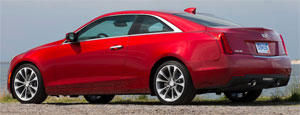 When it comes to handling, there’s the same 5-link IRS, and double pivot MacPherson strut front suspension, but with unique tuning that feels a tad stiffer than the sedan. For best results, you can upgrade to the FE3 sport suspension with Magnetic Ride Control, as well as a mechanical limited-slip rear diff.
When it comes to handling, there’s the same 5-link IRS, and double pivot MacPherson strut front suspension, but with unique tuning that feels a tad stiffer than the sedan. For best results, you can upgrade to the FE3 sport suspension with Magnetic Ride Control, as well as a mechanical limited-slip rear diff.
The belt-driven, variable effort electric steering works well, with precise inputs and decent feel. All-wheel-drive is available with both engines. Brembo brakes are standard, but just for up front. And that was enough to bring things to a halt in a short average distance of 120-feet from 60.
The interior is well-crafted. We especially like our car’s carbon fiber accents. The enhanced CUE system makes for easier smart phone use. Most info is easier to find, and the touchscreen seems more responsive. Front seats are as comfortable as we remember; the steering wheel still feels great in your hands; and the gauge panel is still clear and comprehensive. This Coupe is a 2+2 so rear legroom is tight. Still, the seats cushions are comfortable.
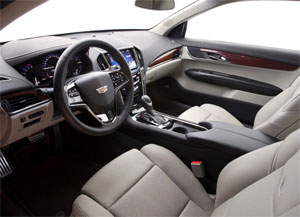 Two different safety packages are available: Driver Awareness and Driver Assist; and include back-up camera, full-speed range adaptive cruise control, lane keep assist, front and rear automatic braking, head-up display, and of course GM’s safety alert vibrating seat. Trunk capacity stays the same as the sedan at 10.4 cubic-ft.
Two different safety packages are available: Driver Awareness and Driver Assist; and include back-up camera, full-speed range adaptive cruise control, lane keep assist, front and rear automatic braking, head-up display, and of course GM’s safety alert vibrating seat. Trunk capacity stays the same as the sedan at 10.4 cubic-ft.
Government Fuel Economy Ratings for the V6 are also the same as the sedan at 18-City, 28-Highway, and 22-Combined. We averaged a fine and fun 23.8 miles-per-gallon of Regular. The Energy Impact Score falls about average at 15.0-barrels of yearly oil use with CO2 emissions of 6.8-tons.
Base pricing for a standard 2.0-liter ATS Coupe is $38,990; V6 pricing begins at $46,145.
If Cadillac had come to us for advice before building the 2015 ATS Coupe, we would have told them to keep the sedan’s performance intact and keep the price under 40. Well, they did us one better by keeping the price reasonable, and packing in even more total performance. We think that much like the sedan, the ATS Coupe should be an instant sales success and have no problem carving out a spot among the luxury sport coupe elite.
Specifications
- Engine: 3.6 liter
- Horsepower: 321
- Torque: 275 lb-ft.
- 0-60 mph: 6.2 seconds
- 1/4 mile: 14.6 seconds @ 100 mph
- EPA: 18 mpg city/ 28 mpg highway
- Energy Impact: 15.0 barrels of oil/yr
- CO2 Emissions: 6.8 tons/yr
2025 Genesis G80
New Interior And New Tech Elevates G80 Sedan
Talk about bad timing. This second-generation G80 debuted at the height of a global pandemic. But that hasn’t stopped Genesis or this Bentley-on-a-budget sedan. In fact, since then, Genesis has unveiled a spectacular all-electric version and now given all G80s a makeover. So, let’s find out what a better and better-timed new G80 is ready to deliver.
Breaking into the luxury sedan scene requires going up against traditional brands with long pedigrees and legions of loyal buyers. But Hyundai has never shied away from a challenge, and has made steady progress with their Genesis brand, and hopes that a revised 2025 G80 midsize sedan will be their next step up.
Styling matters more when you’re the upstart, and the Genesis Athletic Elegance theme changes very little for ’25; just a new grille, slightly reshaped bumpers, new wheels ranging from 18 to 20 inches, and an updated color palette. The G80’s unique two-line LED headlamps get revised Micro Lens Array technology that boosts performance while minimizing the brightness for oncoming drivers.
Changes inside are much more significant with an entirely new dash and console, eliminating both the hooded gauge panel and dashtop wide info screen. Merging them together into one 27-inch wide LG panoramic display than runs from behind the steering wheel to over the center stack. There’s a bigger and more comprehensive control panel in the center stack; while the console gets less armrest coverage, more space for storage, and reshaped cupholders. The wider display is still a touchscreen, but there is also a console mounted controller if you prefer to keep it fingerprint free. Both options work well, but the controller is still too easy to confuse with the dial-like shifter.
Materials are on par if not a notch above most European luxury rivals, and there are 18 speakers to crank out 1,400 watts of premium sound from Bang & Olufsen. Top Sport Prestige trim comes with Nappa leather seats, carbon fiber trim, micro-suede materials for the headliner and pillar covers, heated armrests, head-up display, and upgraded active safety features. Front seats are immensely comfortable without feeling overly soft, and there’s plenty of comfort and room for adults in the back seat.
More Bentley than Benz; streaking down the track with European-style solidity that gives you very little indication of the high speed you’re traveling at.
Same powertrains as last year. Base power comes from a 300-horsepower 2.5-liter turbo-four; the upgrade is this 3.5-liter twin-turbo V6 that outputs 375 horsepower and 391 lb-ft of torque. Both are hitched to standard all-wheel drive. At our Mason Dixon Dragway test track, the AWD delivered enough grip for consistent slip-free launches. We hit 60 in 5.0 seconds flat. Run after run, the 3.5T pulled as strong as it sounds. All G80s work with the same paddle-shift eight-speed automatic transmission, and while shifting was silky smooth on the street, here on the track with Sport Mode and wide-open throttle they were noticeably firmer and quicker.
It was a very surreal experience in the cabin. More Bentley than Benz; streaking down the track with European-style solidity that gives you very little indication of the high speed you’re traveling at. For us, that was 105 mph in 13.4 seconds at the quarter. In addition to the G80’s Sport Mode that tightens steering, improves throttle response, adjusts shifting points, firms up the suspension, and reconfigures stability system parameters; Sport Prestige trim adds rear-wheel steering and an electronic limited slip differential. But, even with all of that, it didn’t feel overly sporty in our handling course. Now, we were able to comfortably carry quite a bit of speed through the cones, but there was just an overall soft, somewhat disconnected and heavy presence that had us unsure of how hard we could push. Sport Prestige also adds upgraded performance brakes. They were plenty capable, bringing this 4,600-lbs. luxury liner consistently down from 60 in just 104 feet with little fade.
Government Fuel Economy Ratings for the six-cylinder are 16 City, 24 Highway, and 19 Combined. We averaged a good 21.3 mpg of Premium. Still, that’s a slightly below average Energy Impact Score, using 15.7 barrels of oil annually with 7.8 tons of CO2 emissions.
Considering the amount of luxury packed into the G80, its $58,350 starting price, even though slightly higher than last year, remains pretty remarkable. It’s a substantial step up to the 3.5T though, as it begins at $70,850.
Genesis has existed as a standalone luxury brand for just less than a decade, and it has indeed been making steady progress into what is surely the hardest segment of all to master. The 2025 Genesis G80 sedan continues to impress and is a great option for luxury-minded buyers who prioritize true value over badges.
Specifications
As Tested
- Engine: 3.5-liter twin-turbo V6
- Transmission: eight-speed automatic
- Horsepower: 375
- Torque: 391 lb-ft
- EPA: 16 City | 24 Highway | 19 Combined
- 0-60 mph: 5.0 seconds
- 1/4 Mile: 13.4 seconds at 105 mph
- Braking, 60-0 (avg.): 104 feet
- MW Fuel Economy: 21.3 mpg (Premium)







